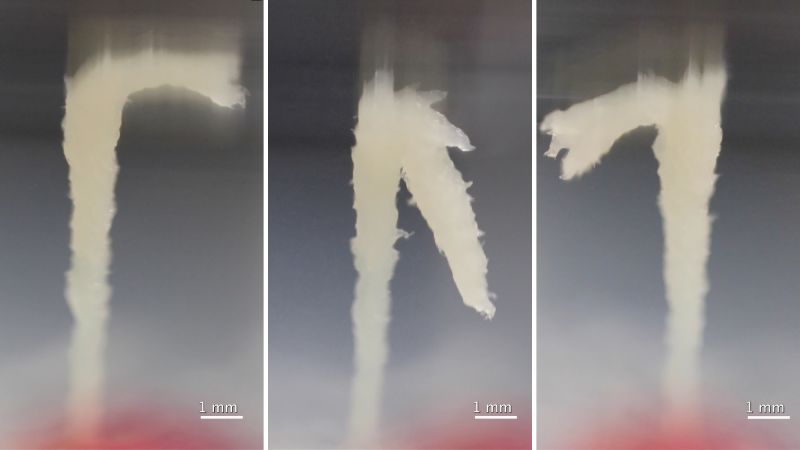Recently, researchers have observed a fascinating phenomenon in the world of tiny organisms, specifically nematodes, which are microscopic roundworms that can be found all over the Earth’s surface. When one thinks of nature offering a sanctuary from the chaos of urban life, one may envision serene gardens or parks; however, even in tranquil settings like orchards, one can be confronted with these diminutive architects tirelessly engaged in unique building activities. These nematodes have been found to form intricate, tower-like structures composed of tightly stacked individuals resembling skyscrapers—though built not of steel or concrete, but rather of the soft bodies of these creatures.
The noteworthy observations were made by scientists from the Max Planck Institute of Animal Behavior and the University of Konstanz in Germany. After exhaustive weeks spent inspecting rotting fruits, they uncovered hundreds of these one-millimeter-long worms meticulously piling onto one another into shapes that could reach ten times their individual size. This collaborative behavior raised questions about the underlying principles governing it, which led the researchers to conduct experiments using the model organism Caenorhabditis elegans, a species of nematode frequently used in biological studies.
In their lab, the research team recorded how these worms could construct structures in a matter of hours, extending exploratory “arms” as they interacted with their surroundings while building. Yet, the purpose behind these collective formations seemed initially elusive. The study findings, published in the journal Current Biology, underscored that even the smallest creatures could inspire profound inquiries regarding the evolutionary basis of their social behaviors. Senior study author Serena Ding remarked on this by highlighting that what they uncovered was not merely a collection of worms stacked upon one another, but rather a coordinated “superorganism” acting in unison.
In pursuit of understanding what triggered this gathering behavior among the nematodes, the team subjected the worms to various stimuli, including poking and the presence of a fly. Their results showed that the nematodes were highly responsive to sensory cues, directing their tower formations toward various stimuli, including metallic objects or buzzing flies. This indicated that the worms might be trying to attach themselves to larger insects to hitch a ride to areas with more abundant food sources, such as decomposing fruit.
The whimsy of this endeavor becomes more pronounced when considering the nematodes’ diminutive size, which complicates their ability to cover significant distances, especially considering predation risks. In groups, the chances of survival and reproductive success may improve, just as their formed structures reportedly assisted in bridging gaps within experimental petri dish environments.
Associaed professor Orit Peleg from the University of Colorado Boulder expressed her enthusiasm for the study, believing that it portended broader implications regarding the ecological significance of social behaviors like those exhibited by the nematodes. The findings also open avenues for controlled experiments to further unravel the perceptual world and communication methods of these organisms within a group dynamic.
Next on the agenda for the research team is to differentiate whether the construction of these towers displays cooperation or competition among nematodes. The study’s first author, Daniela Perez, hypothesized that these behaviors could be either cooperative or analogous to chaotic sales frenzies. By exploring other self-assembling species, researchers hope to elucidate the social norms governing nematodes. The comparisons drawn to social insects, such as ants, offer insights into communal living strategies, especially considering how ants work together to survive environmental threats like floods.
Despite parallels to ants, the absence of evident hierarchies or roles within the nematode towers suggests differing social structures. Researchers noted that the worms appeared to operate uniformly across their tower formations, indicating a potential lack of competitive behavior among them. Moreover, it remains to be seen how the worms may communicate—if at all—during their cooperative acts, as distinct methods seen in other species are still lacking in the study of nematodes.
Overall, the exploration of nematodes as self-organizing entities contributes to a burgeoning discourse on cooperation and communication among microorganisms, which may eventually inform technological advances such as robotics and systems communications. The curious behavior of these tiny creatures encourages not just a reevaluation of ecological systems, but hints at a network of interaction that runs deeper than the simple corporeality of their existence. Both scientific inquiry and ecological appreciation find new ground, thanks to such remarkable and sociable nematodes.












